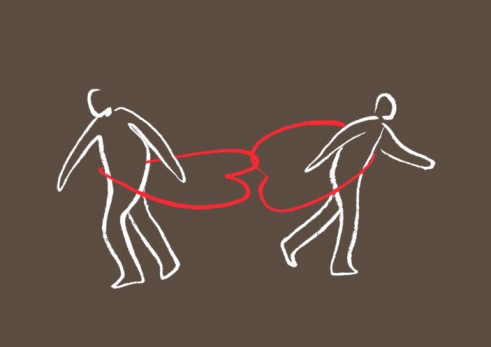 The most significant increase in divorces nationwide has been among baby boomers, essentially those people born between 1945 and 1965. That is not terribly surprising given the high number of people in this age range. However, it does present new dynamics to divorce to the point where the notion of “boomer divorce” has started to reshape the way divorce happens.
Baby boomers who face divorce tend to have different issues, and different priorities, than other generations. For the most part their children are grown, or nearly grown. As a result, they do not need significant help with issues of custody or parenting. However, they tend to be very concerned about the well-being of their grown children; whether it comes to making sure that college is financed or addressing their children’s desire to have their parents behave amicably.
Children in their late teens or early twenty’s often care deeply about their parent’s divorce and the way that their parents face divorce can have an impact on their lives. If they are in college, they want to be able to visit each parent during school breaks and acrimony between parents can make that awkward or difficult. When they look ahead toward important life events like weddings, graduations, births and baptism, they want both parents to be able to participate without bringing unwanted tension to these life events.
I have heard many stories about parents who attend their child’s wedding and cannot be in the same room together. It is very sad to imagine a young bride or groom, on the most important day of their lives, having to focus on have to protect or care for one or both of their parents rather than focus on this important occasion. Many of have witnessed these sad occasions. At the same time, we have witnessed divorcing parents who are amicable with each other and can share the experience of their child’s wedding in a way that truly honors the event.
Baby boomers also care a great deal about planning for their financial future and in creating a divorce agreement that allows them to eventually enjoy their retirement years. With people living longer and remaining healthy will into their later years, there is generally a great deal of fear about the divorce altering their retirement plans. While divorce does take a financial toll on all of the family resources, including a division of retirement assets, boomers who use creative planning, including working with an interdisciplinary team that includes financial professionals, can find acceptable creative solutions.
The unique problems faced by most boomers are increasingly causing them to look for more amicable and creative options to help them divorce in a way that preserves their sanity, their co-parenting and their financial nest egg as much as possible. For information about those options go to www.collaborativelaw.org or www.divorcechoice.com.
The most significant increase in divorces nationwide has been among baby boomers, essentially those people born between 1945 and 1965. That is not terribly surprising given the high number of people in this age range. However, it does present new dynamics to divorce to the point where the notion of “boomer divorce” has started to reshape the way divorce happens.
Baby boomers who face divorce tend to have different issues, and different priorities, than other generations. For the most part their children are grown, or nearly grown. As a result, they do not need significant help with issues of custody or parenting. However, they tend to be very concerned about the well-being of their grown children; whether it comes to making sure that college is financed or addressing their children’s desire to have their parents behave amicably.
Children in their late teens or early twenty’s often care deeply about their parent’s divorce and the way that their parents face divorce can have an impact on their lives. If they are in college, they want to be able to visit each parent during school breaks and acrimony between parents can make that awkward or difficult. When they look ahead toward important life events like weddings, graduations, births and baptism, they want both parents to be able to participate without bringing unwanted tension to these life events.
I have heard many stories about parents who attend their child’s wedding and cannot be in the same room together. It is very sad to imagine a young bride or groom, on the most important day of their lives, having to focus on have to protect or care for one or both of their parents rather than focus on this important occasion. Many of have witnessed these sad occasions. At the same time, we have witnessed divorcing parents who are amicable with each other and can share the experience of their child’s wedding in a way that truly honors the event.
Baby boomers also care a great deal about planning for their financial future and in creating a divorce agreement that allows them to eventually enjoy their retirement years. With people living longer and remaining healthy will into their later years, there is generally a great deal of fear about the divorce altering their retirement plans. While divorce does take a financial toll on all of the family resources, including a division of retirement assets, boomers who use creative planning, including working with an interdisciplinary team that includes financial professionals, can find acceptable creative solutions.
The unique problems faced by most boomers are increasingly causing them to look for more amicable and creative options to help them divorce in a way that preserves their sanity, their co-parenting and their financial nest egg as much as possible. For information about those options go to www.collaborativelaw.org or www.divorcechoice.com.  The most significant increase in divorces nationwide has been among baby boomers, essentially those people born between 1945 and 1965. That is not terribly surprising given the high number of people in this age range. However, it does present new dynamics to divorce to the point where the notion of “boomer divorce” has started to reshape the way divorce happens.
Baby boomers who face divorce tend to have different issues, and different priorities, than other generations. For the most part their children are grown, or nearly grown. As a result, they do not need significant help with issues of custody or parenting. However, they tend to be very concerned about the well-being of their grown children; whether it comes to making sure that college is financed or addressing their children’s desire to have their parents behave amicably.
Children in their late teens or early twenty’s often care deeply about their parent’s divorce and the way that their parents face divorce can have an impact on their lives. If they are in college, they want to be able to visit each parent during school breaks and acrimony between parents can make that awkward or difficult. When they look ahead toward important life events like weddings, graduations, births and baptism, they want both parents to be able to participate without bringing unwanted tension to these life events.
I have heard many stories about parents who attend their child’s wedding and cannot be in the same room together. It is very sad to imagine a young bride or groom, on the most important day of their lives, having to focus on have to protect or care for one or both of their parents rather than focus on this important occasion. Many of have witnessed these sad occasions. At the same time, we have witnessed divorcing parents who are amicable with each other and can share the experience of their child’s wedding in a way that truly honors the event.
Baby boomers also care a great deal about planning for their financial future and in creating a divorce agreement that allows them to eventually enjoy their retirement years. With people living longer and remaining healthy will into their later years, there is generally a great deal of fear about the divorce altering their retirement plans. While divorce does take a financial toll on all of the family resources, including a division of retirement assets, boomers who use creative planning, including working with an interdisciplinary team that includes financial professionals, can find acceptable creative solutions.
The unique problems faced by most boomers are increasingly causing them to look for more amicable and creative options to help them divorce in a way that preserves their sanity, their co-parenting and their financial nest egg as much as possible. For information about those options go to www.collaborativelaw.org or www.divorcechoice.com.
The most significant increase in divorces nationwide has been among baby boomers, essentially those people born between 1945 and 1965. That is not terribly surprising given the high number of people in this age range. However, it does present new dynamics to divorce to the point where the notion of “boomer divorce” has started to reshape the way divorce happens.
Baby boomers who face divorce tend to have different issues, and different priorities, than other generations. For the most part their children are grown, or nearly grown. As a result, they do not need significant help with issues of custody or parenting. However, they tend to be very concerned about the well-being of their grown children; whether it comes to making sure that college is financed or addressing their children’s desire to have their parents behave amicably.
Children in their late teens or early twenty’s often care deeply about their parent’s divorce and the way that their parents face divorce can have an impact on their lives. If they are in college, they want to be able to visit each parent during school breaks and acrimony between parents can make that awkward or difficult. When they look ahead toward important life events like weddings, graduations, births and baptism, they want both parents to be able to participate without bringing unwanted tension to these life events.
I have heard many stories about parents who attend their child’s wedding and cannot be in the same room together. It is very sad to imagine a young bride or groom, on the most important day of their lives, having to focus on have to protect or care for one or both of their parents rather than focus on this important occasion. Many of have witnessed these sad occasions. At the same time, we have witnessed divorcing parents who are amicable with each other and can share the experience of their child’s wedding in a way that truly honors the event.
Baby boomers also care a great deal about planning for their financial future and in creating a divorce agreement that allows them to eventually enjoy their retirement years. With people living longer and remaining healthy will into their later years, there is generally a great deal of fear about the divorce altering their retirement plans. While divorce does take a financial toll on all of the family resources, including a division of retirement assets, boomers who use creative planning, including working with an interdisciplinary team that includes financial professionals, can find acceptable creative solutions.
The unique problems faced by most boomers are increasingly causing them to look for more amicable and creative options to help them divorce in a way that preserves their sanity, their co-parenting and their financial nest egg as much as possible. For information about those options go to www.collaborativelaw.org or www.divorcechoice.com. 



 Collaborative Divorce was started in Minnesota 25 years ago and has spread to more than 20 countries because it meets two basic needs felt by divorcing couples around the world. What does it mean to say that a divorce is Collaborative?
First, it is important to understand that difference between the formal Collaborative divorce process (with a capital C) and the use of the word collaborative. To be collaborative simply means to work together and, in that sense, any divorce in which people work together could be described as collaborative, (small c). However, the Collaborative divorce process is something distinctly different.
Most people want to keep their divorce amicable, and Collaborative Divorce gives them the tools to work out of court to make that happen. At the same, people facing divorce want to know that they are protected; that they have someone looking out for their interests. Collaborative Divorce provides each party with an attorney who will work with them to help them achieve their most meaningful goals.
In a Collaborative Divorce, the attorneys must withdraw if the matter goes to court in an adversarial proceedings. That is the one rule. A rule that is simple and yet, changes the entire tenor of the divorce negotiation. It is a great example of addition by subtracting. By subtracting one element, (the ability of the lawyers to fight), a door is opened to add many more valuable tools (true interest based-bargaining, teaming with financial experts and mental health professionals, deeper solutions, etc.). That one change redefines the negotiation and creates a ripple effect that, if handled in a skillful manner, creates many more options.
People sometimes hire aggressive lawyers, reluctantly; believing that their spouse will be aggressive and that they, therefore, need to “fight fire with fire”. The problem, of course, is that fighting fire with fire means there is a great risk that someone (maybe everyone) will get burned.
Collaborative Divorce, with the agreement not to fight, is intended to put out the fire, so that you, and your spouse, can build their future on solid ground. That is not easy to achieve. It requires skill and commitment. An attorney who cannot use argument and fighting must have other skills. Equally important, clients who intend to achieve their highest goals without fighting must be prepared to work on developing other skills as well.
To learn more about the Collaborative Process and to find experts with skill and experience in this area, go to
Collaborative Divorce was started in Minnesota 25 years ago and has spread to more than 20 countries because it meets two basic needs felt by divorcing couples around the world. What does it mean to say that a divorce is Collaborative?
First, it is important to understand that difference between the formal Collaborative divorce process (with a capital C) and the use of the word collaborative. To be collaborative simply means to work together and, in that sense, any divorce in which people work together could be described as collaborative, (small c). However, the Collaborative divorce process is something distinctly different.
Most people want to keep their divorce amicable, and Collaborative Divorce gives them the tools to work out of court to make that happen. At the same, people facing divorce want to know that they are protected; that they have someone looking out for their interests. Collaborative Divorce provides each party with an attorney who will work with them to help them achieve their most meaningful goals.
In a Collaborative Divorce, the attorneys must withdraw if the matter goes to court in an adversarial proceedings. That is the one rule. A rule that is simple and yet, changes the entire tenor of the divorce negotiation. It is a great example of addition by subtracting. By subtracting one element, (the ability of the lawyers to fight), a door is opened to add many more valuable tools (true interest based-bargaining, teaming with financial experts and mental health professionals, deeper solutions, etc.). That one change redefines the negotiation and creates a ripple effect that, if handled in a skillful manner, creates many more options.
People sometimes hire aggressive lawyers, reluctantly; believing that their spouse will be aggressive and that they, therefore, need to “fight fire with fire”. The problem, of course, is that fighting fire with fire means there is a great risk that someone (maybe everyone) will get burned.
Collaborative Divorce, with the agreement not to fight, is intended to put out the fire, so that you, and your spouse, can build their future on solid ground. That is not easy to achieve. It requires skill and commitment. An attorney who cannot use argument and fighting must have other skills. Equally important, clients who intend to achieve their highest goals without fighting must be prepared to work on developing other skills as well.
To learn more about the Collaborative Process and to find experts with skill and experience in this area, go to 


 Almost all divorces end up in a negotiated settlement. (In most states, less than 5% of all divorces actually go to trial.) Therefore, the most important thing for couples to consider, before they start down the path toward divorce, is how to negotiate the best possible resolution to your divorce.
When I ask most clients what they want from a divorce process, they almost always talk about two things:
1.) They want a divorce that is amicable.
This makes sense. Most wise people would want an amicable divorce; either for the sake of their children, the protection of their finances, preserving their own mental health, or all three. No sane person would choose to have a messy divorce if they can avoid it.
2.) They want to feel protected.
At the same time, almost everyone wants to feel some sense of protection. They are entering into important agreements that will impact their lives and, perhaps, the lives of the children for many years. They do not want to sign an agreement that they will resent or regret.
These two negotiating goals do not need to conflict with each other.
The biggest mistake that people can make is thinking that these two goals are in conflict with each other. They want an amicable divorce but they think the need to hire an aggressive lawyer to protect their needs. Or, alternatively, they think that all lawyers will be aggressive so they avoid getting legal counsel and end up with a settlement that they regret.
Contrary to common belief, it is possible for divorcing clients to have the “best of both worlds”. This is the very reason that
Almost all divorces end up in a negotiated settlement. (In most states, less than 5% of all divorces actually go to trial.) Therefore, the most important thing for couples to consider, before they start down the path toward divorce, is how to negotiate the best possible resolution to your divorce.
When I ask most clients what they want from a divorce process, they almost always talk about two things:
1.) They want a divorce that is amicable.
This makes sense. Most wise people would want an amicable divorce; either for the sake of their children, the protection of their finances, preserving their own mental health, or all three. No sane person would choose to have a messy divorce if they can avoid it.
2.) They want to feel protected.
At the same time, almost everyone wants to feel some sense of protection. They are entering into important agreements that will impact their lives and, perhaps, the lives of the children for many years. They do not want to sign an agreement that they will resent or regret.
These two negotiating goals do not need to conflict with each other.
The biggest mistake that people can make is thinking that these two goals are in conflict with each other. They want an amicable divorce but they think the need to hire an aggressive lawyer to protect their needs. Or, alternatively, they think that all lawyers will be aggressive so they avoid getting legal counsel and end up with a settlement that they regret.
Contrary to common belief, it is possible for divorcing clients to have the “best of both worlds”. This is the very reason that 
